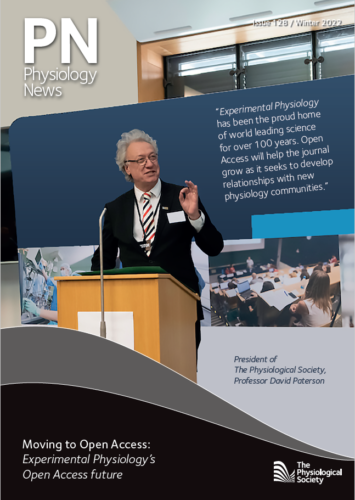
Physiology News Magazine
Changing Landscapes
Editor-in-Chief, The Journal of Physiology
News and Views
Changing Landscapes
Editor-in-Chief, The Journal of Physiology
News and Views

Dr Peter Kohl
Editor-in-Chief, The Journal of Physiology
We are witnessing an explosion in the number of published research papers, rising from 1.02 million PubMed entries in 2011 to 1.78 million in 2021. The current number is equivalent to three PubMed papers every minute! One may be forgiven for mentioning, in this context, that the income that can be generated in industrial-scale academic publishing is mind-boggling. Globally, the sector has an estimated annual turnover of ~USD 28 billion (STM Global Brief, 2021), exceeding the music industry, which generates ~USD 26 billion p.a. (IFPI, 2022). Profit margins can be in the region of 40% (STM Global Brief, 2021) helped by voluntary contributions of us scientists who do the peer-reviewing,1 as well as submitting otherwise funded research in the first place.
You may wonder where all that money goes. For society-owned not-for-profit journals, the answer is relatively straightforward: it is used to support the charitable aims of the academic owners. This means that societies, their journals, and their membership are “in the same boat, on the same sea, sailing the same breeze” (borrowing heavily from the Rolling Stones’ Between a rock and a hard place, 1989).2 Therefore, when we write, review, and refer for/to journals of The Physiological Society, we are supporting a good cause!
With this in mind, and to better reflect the latest developments in the field of physiology as a whole, The Journal of Physiology is working to strengthen its activities not only in the three core contributing domains neuroscience, exercise, and cardiovascular physiology (which collectively account for >60% of published research), but also in the so-called “smaller fields” across the entire spectrum of physiology. In addition, we will add hitherto underrepresented domains, namely “physiological omics”, and “data science & modelling”.
This undertaking is backed by a series of nearly 20 Special Issue topics that will be announced over the course of the next year, led by members and fellows of our marvellous Editorial Board. With regard to the two new scientific domains, above, I am delighted to welcome Jeannette Erdmann, Professor for Cardiogenetics at the University of Lübeck, Germany, and Natalia Trayanova, Murray B. Sachs Professor and Director of Computational Cardiology at Johns Hopkins University, US, as new Senior Editors at the journal. Both are international leaders and keen to encourage submissions that extend our scope of publications.
The final 2022 issue of The Journal will also see the launch of a new article category: Opinion. These will offer stimulating conceptual views on exciting new and/or controversial areas of physiology research, and they are hoped to help foster exchange across our community, ideally seeding new ideas for further research. The first Opinion will be by Denis Noble, Emeritus Professor of Physiology at Oxford, and long-term member of The Society (On 31 December 2022, Denis Noble will have been a member of The Society for 60 years. Congratulations, Denis!).
Tectonic changes are afoot at Experimental Physiology too. From January 2023, the journal will be fully Open Access. We wish the team, authors, and readers a productive journey on this exciting endeavour. Much to be learned.3
Let me finish by encouraging you to get in touch if you have suggestions for Special Issue topics, reviews, Opinion papers – or comments on how The Journal may serve you and The Physiological Society better.
With the best wishes for a peaceful 2023, Peter Kohl
References
IFPI (2022). IFPI Global Music Report – State of the Industry. Available online at https://www.ifpi.org/wp-content/uploads/2022/04/IFPI_Global_Music_Report_2022-State_of_the_Industry.pdf
STM Global Brief (2021). Economics & Market Size. Available online at https://www.stm-assoc.org/2022_08_24_STM_White_Report_a4_v15.pdf
Footnotes
- Ideas for rather rigorous changes in peer review are being tested, such as by eLife: https://elifesciences.org/articles/83889 who propose “Peer review without gate keeping“. No doubt, this would further increase throughput via the system. What this will mean for the balance of quantity and quality remains to be seen.
- The rock-and-a-hard place setting from The Rolling Stones song fits current changes in our publishing landscape perfectly.
- For those readers of Physiology News who are still trying to figure out implications of “Plan S”, a research funders (incl. UKRI and Wellcome) backed a drive backed by research funders (including UKRI and Wellcome) to require scientists to publish outside journal paywalls, there is a helpful summary: https://www.nature.com/articles/d41586-021-00883-6. As an aside, the “S” in Plan S apparently stands for any of the following: “science, speed, solution, shock”, https://www.nature.com/articles/d41586-018-06178-7, in case you wondered.
